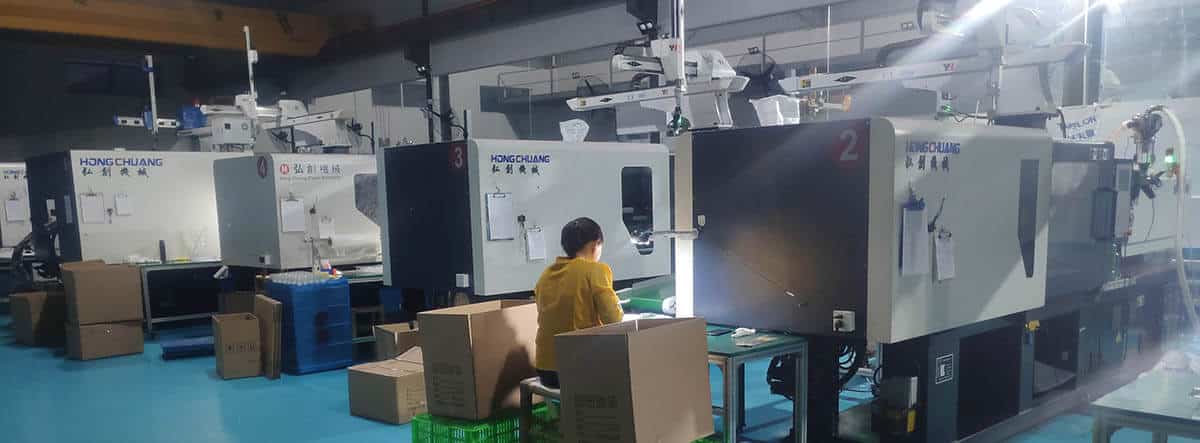One of the most common problems meet in injection moulding is the variation of the process.
Many workers have observed variations in moulding weight from shot to shot of 2 percent with a max spread of 6 percent.
Obviously,with this amount of variation, there must be something badly wrong with the machine. It is a sad commentary on the state of injection machinery in the United Kingdom that it appears to be the norm.
In well-maintained machines, it can expect a variation from shot to shot of no more than 0-2 percent, any greater changes being caused by actual changes in moulding conditions.
The causes of variations in shot weight and their relationship to the machine and mould operation are shown in Table 8.1. Attention to the matters mentioned in the table below should assist in obtaining better reproducibility and less variation in the process.
| Injection pressure | 1. | Dirty oil; blocked filter |
| 2. | Faulty pump; cavitation | |
| 3. | Faulty relief valve | |
| 4. | Overheated or cold oil | |
| Injection rate | 1. | Overheated oil |
| 2. | Air, water, or sludge in the oil | |
| 3. | Faulty control valve | |
| 4. | No accumulator and pump too small for the required rate of flow | |
| Melt temperature | 1. | Heater band malfunction |
| 2. | Thermocouple malfunction | |
| 3. | Faulty temperature controller | |
| 4. | Hot spot in the cylinder | |
| Shot volume | 1. | Faulty switch on feed control |
| 2. | Worn cam follower on feed control | |
| 3. | Worn and leaking check ring (back-flow stop valve) | |
| 4. | Incorrect screw-back speed | |
| 5. | Malfunction of pressure reduction switching | |
| 6. | Nozzle dribble | |
| 7. | Leakage at nozzle/sprue bush | |
| Mould temperature | 1. | No proper mould temperature control |
| 2. | Dirt or rust in cooling channels | |
| 3. | Cooling channels wrongly connected. | |
| Mould characteristics | 1. | Mould incorrectly set |
| 2. | Mould distorted | |
| 3. | Mould badly vented | |
| 4. | Mould badly constructed | |
| 5. | Mould badly designed |
To sum up, the discussion of the causes and cures of faults in injection moulded components; Table below should be consulted.
[one_third]Fault[/one_third]
[one_third]Generalized cause[/one_third]
[one_third_last]Possible cures[/one_third_last]
[divider_top]
[one_third]Short moulding Sinks and voids
Weld and flow marks
Poor surface finish[/one_third]
[one_third]Cavity not filling properly[/one_third]
[one_third_last]Increase injection pressure
Increase injection rate
Increase cylinder and mould temperature
Increase feed
Improve mould venting
Increase size of gate,sprue, and runner[/one_third_last]
[divider_top]
[one_third]Bum marks[/one_third]
[one_third]Lack of mould venting[/one_third]
[one_third_last]Improve mould venting[/one_third_last]
[divider_top]
[one_third]Mechanical sticking
Flash
Warping
[/one_third]
[one_third]Over-pressurization of cavity[/one_third]
[one_third_last]Reduce injection pressure[/one_third_last]
[divider_top]
[one_third]Silvering and splash marks,Decomposition[/one_third]
[one_third]Overheating of material[/one_third]
[one_third_last]Reduce cylinder temperature
Reduce effects of mechanical
heating
Increase cooling time
[/one_third_last]
[divider_top]
[one_third]Distortion[/one_third]
[one_third]Ejecting too hot[/one_third]
[one_third_last]Increase cooling time
Eject over larger area
[/one_third_last]
[divider_top]
[one_third]Jetting[/one_third]
[one_third]Linear velocity of melt too high[/one_third]
[one_third_last]Reduce velocity or break up
stream of melt
[/one_third_last]
[divider_top]
[one_third]Lamination, crazing[/one_third]
[one_third]Frozen-in stresses[/one_third]
[one_third_last]Ensure rapid filling at lowest
possible pressure
[/one_third_last]
[divider_top]
